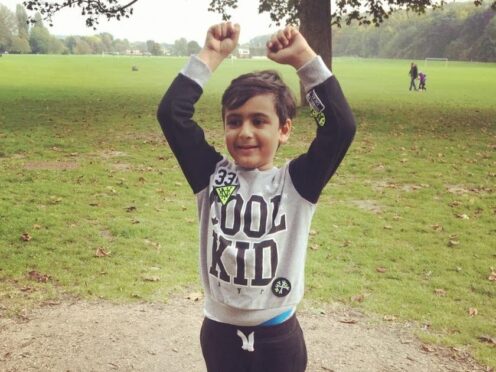
A new targeted treatment which could transform the lives of children with brain tumours has been approved for use on the NHS.
The combination of dabrafenib and trametinib can now be used for patients aged one and over with either low-grade or high-grade glioma with the genetic mutation BRAF V600E.
Gliomas are the most common type of brain cancer in children and young people.
They develop from the glial cells, which support the nerve cells of the brain and spinal cord.
A BRAF mutation is present in around 15%-20% of low-grade gliomas and around 5%-10% of high-grade gliomas in children.
The new drug therapy has been approved by the National Institute for Health and Care Excellence (Nice) after studies showed it lessened chemotherapy side-effects, improved children’s response rate to treatment, and improved the survival time without the disease getting worse.
Progression-free survival time went from 7.2 months with chemotherapy to 24.9 months under the new regime for those with low-grade glioma, and was nine months for those with high-grade disease.
In some cases, tumours completely disappeared, though longer term follow-up of patients is needed. The new treatment is expected to benefit around 30 children a year.
At present, prognosis for children with high-grade gliomas is often poor and fewer than 30% of children survive for five years or more.
For low-grade gliomas, there is a 90% survival rate following surgery, but treatment such as chemotherapy can be gruelling.
The combined therapy, which is used in some other illnesses, is less harsh, can be taken in tablet and liquid form, and can be given at home.
The two drugs work together by blocking the growth signal coming from the mutant BRAF protein and can slow or even stop the tumour from growing.
Dr Michele Afif, chief executive of the Brain Tumour Charity, said: “We are delighted that Nice has approved the first new treatment for paediatric brain tumours in decades.
“Though this will only affect a small population, it’s of huge significance to them and their loved ones and represents real progress.
“We hope that this will be the first of many new treatments that will ensure our community can live longer and better lives.”
Suki Sandhu, whose son Raj Rana died aged eight in 2018, is a trustee at the Brain Tumour Charity and gave evidence to Nice.
Raj had six operations, chemotherapy, immunotherapy and proton beam therapy.
Ms Sandhu said: “I am so pleased Nice has approved the use of these new drugs.
“Many years ago, I had to make the decision to stop chemotherapy treatment for my son as he was suffering with horrible side-effects after years of harsh treatment.
“It was one of the hardest decisions I have ever had to make as it was a clear sign we were running out of options, and it was likely I would lose him.
“The clinical trials on dabrafenib with trametinib show some really favourable results and I know if my son had had the opportunity to go on to such a trial, I would have jumped at it in a heartbeat.”
Professor Peter Johnson, NHS national clinical director for cancer, said: “It is fantastic news that this new precision treatment for children and young people with this type of brain tumour will now be available on the NHS.
“It is a significant step forward in treatment that has been shown to be easier to take than chemotherapy and very effective in blocking the growth of the disease, helping children have a better quality of life for longer.
“It can also be taken at home, meaning children and teenagers can spend less time in hospital having treatment and more time with their loved ones and doing things they enjoy.”
Helen Knight, director of medicines evaluation at Nice, said: “Diagnosis of a glioma brain tumour, which is often fatal for people with advanced high-grade glioma, can have a devastating impact on children and their families.
“Treatment options are limited, and we know they can be brutal. I am pleased we can recommend this new combination therapy that can give children longer without their tumour growing and offers them and their families a better quality of life.”

Enjoy the convenience of having The Sunday Post delivered as a digital ePaper straight to your smartphone, tablet or computer.
Subscribe for only £5.49 a month and enjoy all the benefits of the printed paper as a digital replica.
Subscribe